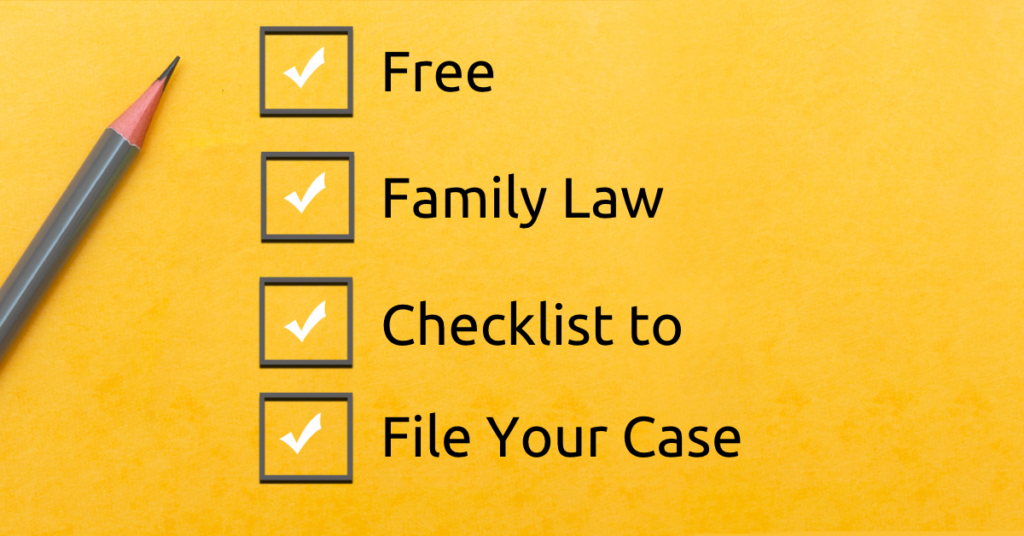I hope you enjoy reading this blog post.
If you want to represent yourself in family law, probate or estate planning court in Arkansas, check out one of our dedicated guides.

Imagine the unthinkable: your child is in immediate danger, and time is of the essence. In such a dire situation, obtaining an emergency custody order from other parent could be the saving grace for your child’s well-being. But how do you navigate such a complex and urgent process? This guide will walk you through the steps needed to obtain an emergency custody order to keep your child safe from harm.
Short Summary
Recognize the signs of abuse and neglect to protect your child.
Take steps to obtain an Emergency Temporary Custody Order by filing a motion with the appropriate court.
Prepare for the legal process, present evidence in support of your case, and seek additional support while seeking emergency custody.
Info in this Blog
Recognizing the Need for Emergency Custody
To file a motion for emergency custody, you must head to the circuit court in the county where the last order was entered or the county where the child resides if not final order has been entered regarding custody. Finding the right court is crucial for filing your motion, and ensuring the motion is filed and processed correctly.
Preparing Necessary Documentation
When it comes to preparing the necessary documentation for an emergency custody hearing, you’ll need to gather evidence of the child’s immediate danger, such as police reports, medical records, and witness statements. Our online video guides provide all the information as well as provide all the documents you will need to file with the court to get an emergency order.
If you decide that you have enough time, it’s a good idea to consult with an attorney to ensure that your documentation is thorough and accurate.
Filing the Petition and Requesting an Ex Parte Hearing
Once you have completed the necessary forms and gathered supporting documents, you’ll need to submit them to the judge granting emergency orders in the court. When submitting your motion, be sure to include a request for an emergency hearing without the other party’s presence. This is known as an ex parte hearing.
By requesting an ex parte hearing, you are ensuring the court hears a swift response to address the urgent situation at hand.
Navigating the Emergency Custody Hearing Process

After filing your petition and requesting an ex parte and hearing date, you’ll need to navigate the emergency custody hearing process. This includes understanding an ex parte order and presenting evidence and testimony to support your case.
Let’s explore these aspects further.
Understanding an Ex Parte Order
An ex parte order is a temporary order or temporary emergency court order issued without the other party’s presence based on the evidence provided. It serves as a quick relief in urgent situations and protects a child’s well-being until a full hearing can be scheduled.
However, it’s important to remember that an ex parte order is a temporary order and limited in scope, not a final order, so it’s crucial to be prepared for the full hearing that will follow.
The Court takes granting emergency orders very seriously. Remember this is when the judge grants the motion without notice to the other parent. You must make sure you have proof of the issues the child faces if the judge does not grant the motion from the requesting parent to protect the children from the other parents.
Presenting Evidence and Testimony
At the emergency custody hearing, you’ll notice the need to present evidence that shows your child’s health, safety, or well-being is at immediate risk. This may include:
Sworn statements
Child protective services reports
Police reports
Any other relevant documents
By presenting a solid case to the judge, you increase the likelihood of obtaining the emergency custody order.
In addition to presenting evidence, you may also need to provide testimony to support your case. This could involve sharing your personal experiences with children or having witnesses testify on your behalf. By offering a compelling argument, you further demonstrate the need for emergency custody and help ensure the safety and well-being of your child.
After the Emergency Custody Order is Granted
Once the emergency child custody order is granted, it’s important to remain vigilant and proactive in ensuring your child’s safety. This involves ensuring compliance with the child custody order, preparing for the next steps, and seeking additional support.
Let’s examine these aspects in more detail.
Ensuring Compliance with the Emergency Order
Following the terms of the emergency custody order is crucial for maintaining your child’s safety. These emergency orders may include visitation or contact restrictions with the other parent. If either parent fails to abide by the order, they could face legal repercussions.
If the other parents do not follow the order, you may need to file a motion for contempt. You can read more here about how to file for contempt.
Preparing for the Next Steps
As you move forward, it’s essential to prepare for the next steps in the legal process. This may include gathering more evidence, attending follow-up hearings, and working towards a permanent custody arrangement.
By staying organized and proactive, you’ll be better equipped to navigate the challenges ahead and protect your child’s best interests.
Seeking Additional Support
Obtaining an emergency custody order can be an emotionally challenging experience. To obtain appointed counsel, seeking additional support from legal professionals, such as counselors and support groups, can help you navigate the process and cope with the emotional challenges. Local resources like family law attorneys, social workers, and other organizations can provide valuable assistance and guidance during this difficult time.
Remember, you’re not alone in this journey – reach out and connect with others who can offer support and understanding.

Free Checklist to Make Sure you Start Your Case Correctly!
Conclusion
In conclusion, obtaining an emergency custody order is a critical step in ensuring the safety and well-being of a child in immediate danger. By recognizing the need to file for an emergency order of custody, navigating the legal process, and seeking additional support, you can help protect your child from harm and secure a brighter future for them. Remember, the safety of your child is paramount, and taking swift action can make all the difference in the world.
Frequently Asked Questions
What are the grounds for emergency custody in Arkansas?
In Arkansas, an ex parte order for emergency custody can be issued when there is probable cause to believe the juvenile’s health or physical well-being is in immediate danger, or if they are at risk of being removed from the state.
Such an order can be issued without notice to the other parent or guardian, and can be granted for up two business days up to 72 hours. During this time, the court will hold a hearing to determine if the order should be extended.
How can the father get emergency custody in Arkansas?
In Arkansas, a father can get emergency custody by proving to the court that their child’s health, safety, or well-being is in immediate danger. If they have enough evidence that the child’s safety and welfare are at immediate risk, the court will grant an emergency custody order.
What is an ex parte order in Arkansas?
An ex parte order in Arkansas is an order issued without prior notice to the abuser and without them present. It provides protection until a full court hearing takes place, usually within 30 days.
How do I file a motion for custody in Arkansas?
If you weren’t married or aren’t getting divorced, you can petition the court for custody by drafting paperwork and filing it with the court, along with a small fee.
This process can be complicated, so it’s important to understand the legal requirements and the court’s procedures. It’s also important to be aware of any deadlines that courts may apply.
Do you want to represent yourself in court?

About Brandon
A licensed attorney with over 10 years of experience – I’ve noticed a lack of support for people who want to represent themselves in court.
So, I’ve created video guides that will help you gain back control of some of the least predictable situations you could experience in your lifetime.
Emergency Custody Guides
Do you want to represent yourself in court?
Modification Guides
- Intro to Family Law
- Requirements to Modify Custody and Support
- Drafting the Motion to Modify
- Court Required Forms
- How, Where, and What to File
- How to Serve or Get a Waiver
- Drafting a Waiver
- Modification Filed Against You
- Child Support Calculation
- Order to Modify
- Procedure in the Courtroom
- What to do with the Decree